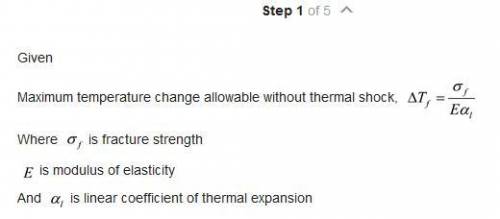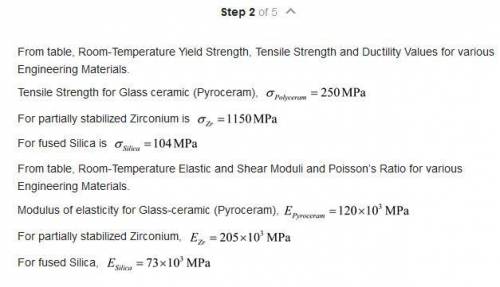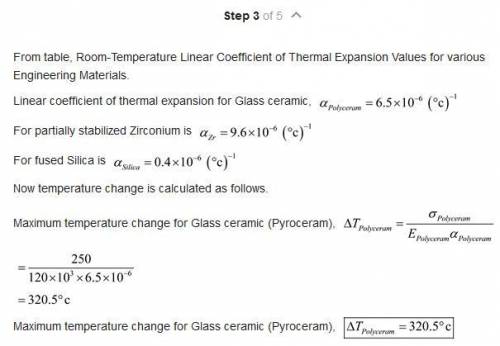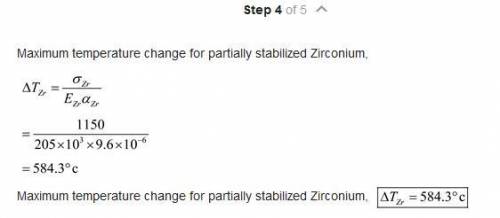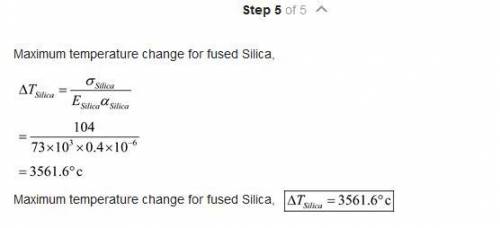
Engineering, 26.03.2020 21:59 ferg6
Equation 19.9, for the thermal shock resistance of a material, is valid for relatively low rates of heat transfer. When the rate is high, then, upon cooling of a body, the maximum temperature change allowable without thermal shock, ΔTf, is approximately where σf is the fracture strength. Determine ΔTf for glass, soda-lime. The values for modulus of elasticity, tensile strength, and coefficient of thermal expansion are 69 GPa, 69 MPa, and 9 x 10-6 °C-1 respectively. Enter your answer in accordance to the question statement 111111.111 °C

Answers: 2
Another question on Engineering

Engineering, 04.07.2019 18:10
Water at the rate of 1 kg/s is forced through a tube with a 2.5 cm inner diameter. the inlet water temperature is 15°c, and the outlet water temperature is 50°c. the tube wall temperature is 14°c higher than the local water temperature all along the length of the tube. what is the length of the tube?
Answers: 3

Engineering, 04.07.2019 18:20
The characteristic roots of a dynamic system are: 1.7920 1.8160 i, -1.7920 1.8160 i, -0.4160 what is the order of this system? what are the settling time and damping ratio of the system?
Answers: 3

Engineering, 04.07.2019 18:20
An engine runs on the ideal diesel cycle. the cycle has a compression ratio of 20 and a cutoff ratio of 2. the highest temperature in the cycle is 1200 k. if the heat into the system is 300 kj/kg of working fluid and using variable specific heats determine the work produced per mass of working fluid
Answers: 3

Engineering, 04.07.2019 19:10
How to increase the thermal officiency of an ideal simple rankino cycle? among these methods, which one is the best and why?
Answers: 2
You know the right answer?
Equation 19.9, for the thermal shock resistance of a material, is valid for relatively low rates of...
Questions








Mathematics, 15.04.2020 03:02

History, 15.04.2020 03:02

Mathematics, 15.04.2020 03:02


Chemistry, 15.04.2020 03:02




History, 15.04.2020 03:02




